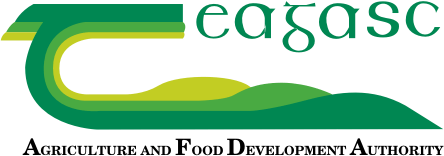19 June 2024
7 steps to manage mid-season grazing with DairyBeef 500 farmer Shane Cranny
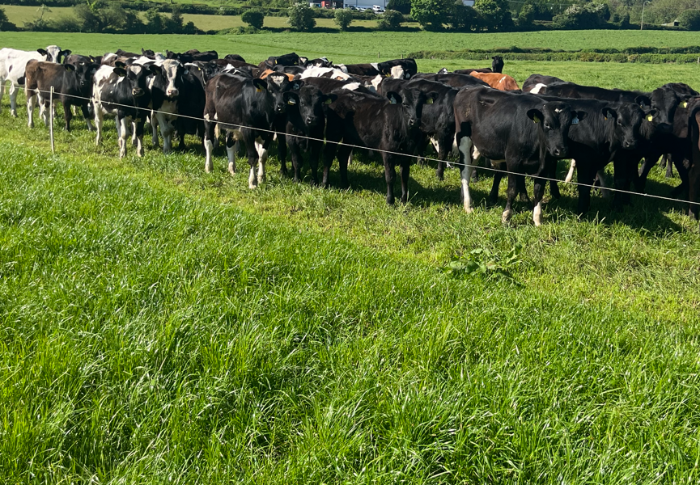
Gordon Peppard DairyBeef 500 Programme Advisor, writes about the 7 steps DairyBeef 500 farmer Shane Cranny is taking to manage mid-season grazing.
Following a difficult and late spring where cattle were turned out to grass a number of times before eventually being able to stay out, Shane Cranny aims to maximise performance of his dairy calf to beef animals over the next number of months at grass. Dairy calf to beef production systems can be high cost, and therefore the more efficient farmers like Shane can be at maximising high quality grazed grass in the diet, will lead to higher performance and profitability. Shane aims to produce high quality grass and maximise its utilisation over the coming months. Here are the main factors that assist him in achieving these goals.
Farm infrastructure
Paddocks
Shane operates a paddock system on his farm. Each grazing group has access to six to seven paddocks. There are currently three grazing groups of animals on his farm,
- 80 Autumn born bull calves,
- 79 Autumn born heifer calves from 2022 and 2023
- 44, one and a half year old steers
The paddock sizes generally allow for two to three days grazing in each paddock where Shane also uses temporary wire reels where necessary to maximise utilisation.
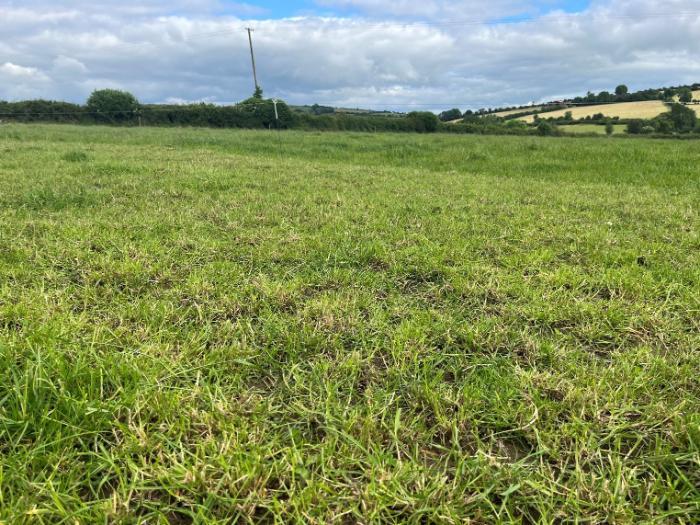
Farm roadway
Accessibility is key to facilitating a long grazing season and to facilitate the easy movement of animals. On Shane’s main grazing block there is an excellent farm roadway running along the side of all the paddocks making it a one man job to move cattle from one paddock to the other when required.
Water
A good water system is essential on any farm, Shane has a number of water troughs on his farm which are strategically placed so that paddocks may be sub divided to maximise grass utilisation where necessary.
Regular grass measurement and budgeting
At this time of year, grass growth on farm can change rapidly, therefore Shane realises the importance of walking the farm regularly to complete a grass measurement and budget. He aims to walk the farm at least once per week and where grass growth is high, then every five days. Measurements are recorded on ‘Pasturebase’ and Shane finds this tool very useful for grass management and he can very quickly identify surpluses or deficits and put a plan in place to manage these scenarios.
At present, some land that was reseeded five to six weeks ago is out of the grazing rotation and also with regrowth’s currently slow to come back on silage ground, grass supply on his farm is currently tight. In the near future, this hopefully will correct itself, fertiliser has been applied, reseeded ground and silage ground will also come back into the grazing platform.
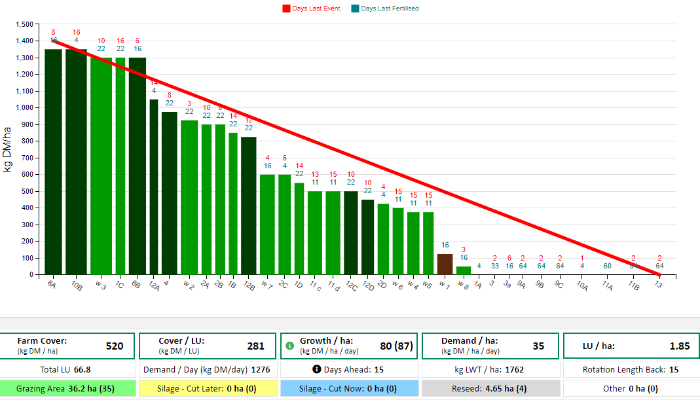
Pre grazing covers
During June and July, Shane’s preference where possible is to enter paddocks for grazing with grass covers between 1300 – 1500 kgs DM/Ha (8 – 10cm). Grazing these covers allows animals to avail of high quality leafy grass to maximise performance. Higher covers than these can lead to poorer utilisation and under performance. Less grass is produced on the farm by grazing lower covers.
Fertiliser
This summer has been very difficult to maintain quality in grass. Applied chemical Nitrogen is essential to maintain quality in grass land swards. Where Shane has an allowance for chemical Phosphorus he will apply approx. one and half bags of 18-6-12 plus Sulphur per acre per month. Keeping Nitrogen spread helps to keep good quality leafy grass ahead of the stock maximising weight gains and where paddocks get too strong to graze they can be taken out as high quality baled silage. Many yards are depleted of silage reserves and every opportunity to re build stocks in the yard should be taken and in this regard, Shane is no different. Shane will target the lower P index (1 and 2’s) soils with 18/6/12 and index 3 and 4 soils for P will get protected urea plus Sulphur.
Sulphur
Sulphur is often the forgotten nutrient in grassland, it is essential for grass growth and is closely associated with Nitrogen uptake and efficiency. Sulphur deficiency can lead to a reduction in the quantity and quality of grass produced. Deficiencies will occur where more is removed from the soil as a result of crop growth and leaching, than is replace by either fertilisers or depositions from the air.
On grazing ground it is recommended to apply 15 – 20 units of sulphur per acre per year from April to July, therefore Shane will apply it in two or three splits over the summer. Silage ground also requires 15 – 20 units per cut.
Rotation length
At this time of the year, Shane’s aim is to grow the grass in three weeks and graze it in three days, giving a 21 day rotation length. Depending on weather, location, grass growth etc. this may be reduced to 18 or 19 day rotation to ensure to graze paddocks at the correct stage. At present grass supply is tight and Shane has the option to either shorten the rotation, grazing slightly lower covers, graze ground closed up for second cut silage or feed silage. Given that reseeded land (12 acres) will very shortly be available for grazing he has currently decided to go into slightly lower covers until this ground becomes available.
Post grazing height
Shane works hard to match grass allocation to stocking rate so that his animals have a paddock/field grazed out within three days so that regrowth’s are not affected. He aims to graze paddocks down to 4 – 4.5cm, leaving a residual of approx. 100kgs DM/Ha. Obtaining a tight grazing to this level allows new quality grass to regrow from the base with minimal stemmy poorer quality material.
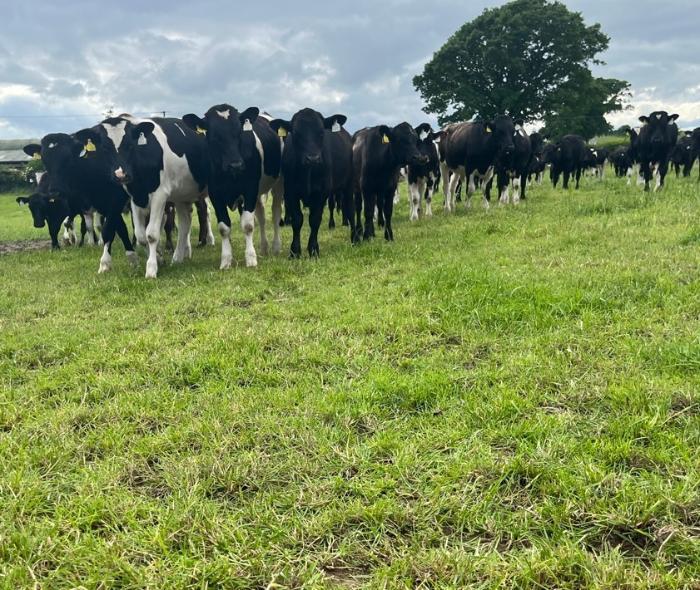
Surplus grass
Where surplus grass can be identified on the farm, Shane will skip these paddocks for grazing and high quality silage bales can be removed. The aim is that surplus bales are taken from different paddocks throughout the grazing season and not continuously from the one paddock.

